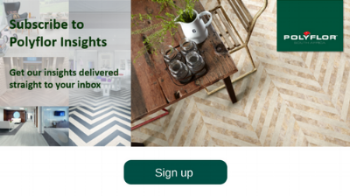Wall protection is fast becoming an important component to consider when designing a building. With today’s ever-growing population, fast-paced world and rushed lifestyle, resilience and sustainability of buildings and spaces are essential. These demands, coupled with a need to reduce maintenance and running costs mean that building and wall protection has much to offer the modern-day building owner and maintenance team.
As soon as any building is occupied and becomes a functional space, wear and tear begins. Damage ranging from scuffs and scrapes to chips, cracks and severe breaks or indentations, starts to occur throughout, including walls, corners and doors. Commercial, education, hospitality and retail buildings experience much higher volumes of people and wheel traffic which leaves them exposed to a high level of wear and tear. Careful consideration of interior building protection, particularly in high traffic zones, can be an important long-term cost saver.
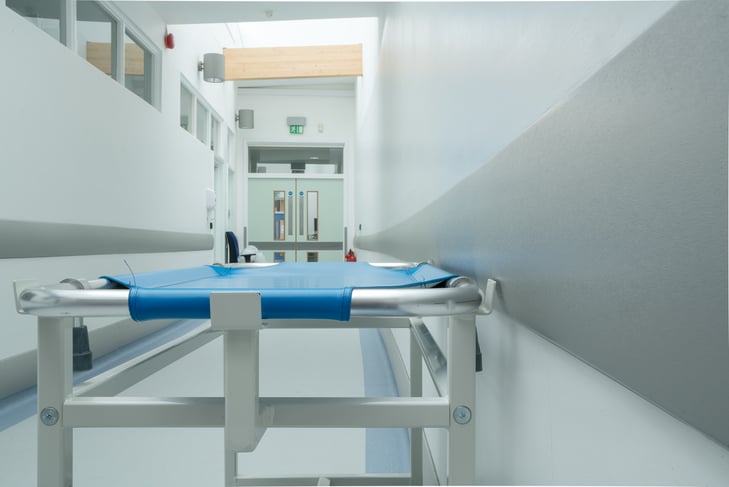
The advantages of having an interior building-protection system
-
Damage limitation
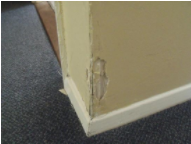
Damage repair can be unsightly and costly and prevention is always better than cure. Having the correct system in place prevents damage to the areas that are most likely to be affected. Vulnerable areas include, doors, corners, height of impact on corridor walls, skirting areas, chair back areas, loading bays and more depending on the nature of the traffic in the building. Interior building protection solutions can prevent damage and ensure protection of these affected areas.
-
Good hygiene
 Good quality interior building protection solutions ensure a high level of hygiene. Hygiene is important across industries including retail, hospitality, commercial and healthcare. Hygiene critical areas such as kitchens, bathrooms, laboratories, operating theatres and more require stringent hygiene measures in place.
Good quality interior building protection solutions ensure a high level of hygiene. Hygiene is important across industries including retail, hospitality, commercial and healthcare. Hygiene critical areas such as kitchens, bathrooms, laboratories, operating theatres and more require stringent hygiene measures in place.
Hygiene has significant relevance in the healthcare environment. Despite efforts to improve hand hygiene, Hospital Acquired Infections (HAIs) are still growing in number globally. Research suggests that hand hygiene and good cleaning protocols may not be sufficient and that contaminated surfaces may play a role in HAI transmission.
High touch surfaces may need additional features which improve their hygiene and decrease contamination risk. Specialised wall protection cladding provides a smooth, seamless, easy-to-clean surface which is not affected by cleaning chemicals. The seamless finish minimises the ability of microbes to accumulate and grow in joins and gaps, whilst the wall protection creates an impermeable barrier to moisture and bacteria and inert materials which further minimises the growth of bacteria.
|
Some interesting statistics about HAIs from the European Centre for Disease prevention and Control
http://ecdc.europa.eu/en/healthtopics/Healthcare-associated_infections/Pages/index.aspx
- "Approximately 4 100 000 patients are estimated to acquire a healthcare-associated infection in the EU each year.
- The number of deaths occurring as a direct consequence of these infections is estimated to be at least 37 000 and these infections are thought to contribute to an additional 110 000 deaths each year.
- Approximately 20-30% of healthcare-associated infections are considered to be preventable by intensive hygiene and control programs."
Some SA statistics: Whilst it is accepted that in developed countries approximately 5-10% of patients admitted to an acute hospital will acquire an HAI, in developing countries the rate can exceed 25%. http://www.health24.com/medical/diseases/hospital-acquired-infections-20120721.
South Africa's statistics probably fall somewhere between these numbers. An article published in the South African Medical Journal in 2016 (by Dr W Lowman, a pathologist in both public and private healthcare in South Africa) states that: "Surveillance of HAIs in South Africa (SA) is neglected and poorly resourced. The true burden of HAIs is unknown, although it is largely accepted that is greater in the public sector than in the private sector, and probably somewhere in the region of 10-20%".
|
-
Reduction in maintenance costs
Continually cleaning, repairing and painting damaged areas can cost substantial amounts of money, not to mention the resulting inconvenience, disruption, logistics to re-evaluate air quality and possible lost working hours. The capital outlay for a wall-protection system is substantially less over the life cycle of the product than the cost of ongoing maintenance.
-
Aesthetic and design enhancement
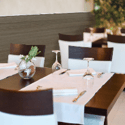 While keeping your building looking neat and well maintained, a carefully planned protection system can be used as a feature and contribute to the overall design (and is sometime implemented purely for aesthetic and design value). There is product available in an array of colours, patterns and textures allowing bespoke design which can alter the look and feel of a space. The design of a healthcare, educational, retail or commercial space is important for the well-being of the staff and end-users.
While keeping your building looking neat and well maintained, a carefully planned protection system can be used as a feature and contribute to the overall design (and is sometime implemented purely for aesthetic and design value). There is product available in an array of colours, patterns and textures allowing bespoke design which can alter the look and feel of a space. The design of a healthcare, educational, retail or commercial space is important for the well-being of the staff and end-users.
-
Improved traffic flow
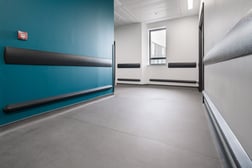 Using specifically coloured protection systems can assist to find a users way around a building or can highlight individual areas in a larger space. Use of specific colour patterns, flows and pathways is becoming an increasingly recognised methodology to assist the elderly and the frail, particularly those struggling with failing vision, Alzheimer’s or Dementia when trying to find their way around healthcare facilities or retirement care centres.
Using specifically coloured protection systems can assist to find a users way around a building or can highlight individual areas in a larger space. Use of specific colour patterns, flows and pathways is becoming an increasingly recognised methodology to assist the elderly and the frail, particularly those struggling with failing vision, Alzheimer’s or Dementia when trying to find their way around healthcare facilities or retirement care centres.
Colour systems are also useful in education and retail sectors. Light Reflective Value (LRV) ratings should be taken into consideration when planning the colour palette. Use of these LRV ratings allows the creation of visual contrast to assist safe navigation of spaces (click here for a video on Project Rainbow which explains the importance of LRV).
-
Talking all languages
Over the last decade a new global language has developed. Emojis are the fastest growing form of language in history based on their incredible adoption rate and speed of evolution. Emojis and similar symbols cross all language barriers and are being used more and more for cross culture communication.
Wall protection sheeting can be used to create way-finding and ‘emoji type communication’ in healthcare, education, retail, hospitality and commercial settings. Baragwanath hospital has recently used this approach in a new Paediatric unit allowing all languages and cultures to be able to navigate their way around the hospital. Patients and parents know exactly which room to go to when they are told to report to the Heart Room, the Cloud Room, the Doggie Room or the Apple Room and this generates a sense of comfort, excitement and familiarity for the young patients, all whilst keeping the doors and walls well protected and hygienic.
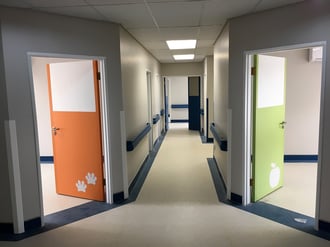
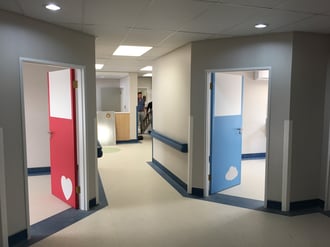
Something to consider: It might be most cost-effective to fit wall and door protection retrospectively. Use a building for 12-months and it quickly becomes obvious where wall and door protection are required or not. A much simpler method than trying to predict before occupying a building.
For more insights like these sign up for Polyflor Insights and we will send useful tips and advice straight to your inbox.
